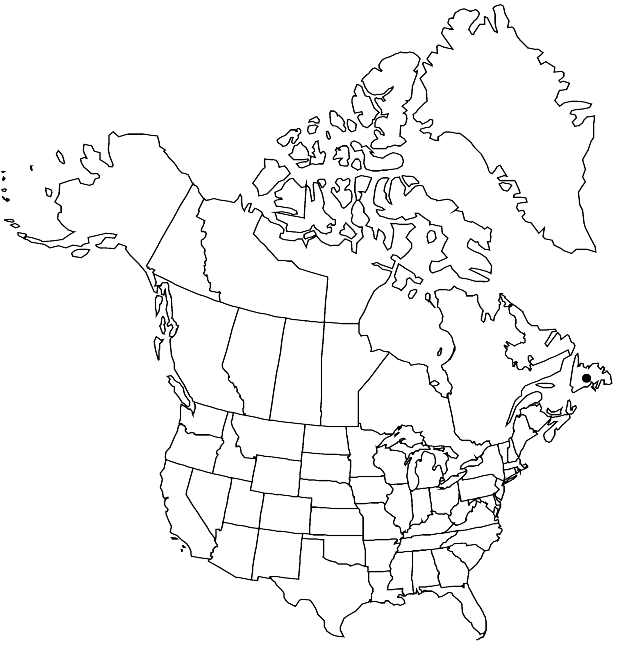Braya longii
Rhodora 28: 202. 1926.
Plants scapose; sparsely pubescent, trichomes simple and 2-forked. Stems simple or few to several from base, erect, (unbranched), 0.3–1.1 (–1.5) dm. Basal leaves: blade narrowly spatulate to oblanceolate, (0.5–) 1–3 (–5) cm × 1–3.5 mm, base (membranous), broadly expanded near point of attachment, margins entire, (sparsely ciliate proximally), apex obtuse. Cauline leaves: 0 or 1 (or a leaflike bract subtending proximalmost pedicel). Fruiting pedicels erect or ascending, (1.2–) 1.5–4.5 (–4.9) mm. Flowers: sepals 2–3 (–3.5) × (1.1–) 1.2–1.7 mm; petals white (or claw purplish), (3–) 3.3–4.8 (–5) × (1.2–) 1.4–2.5 (–3) mm, (claw and blade usually well-differentiated, apex rounded); filaments 1.7–2 mm; anthers oblong, 0.3–0.4 mm. Fruits lanceoloid-subulate, not torulose, (straight), (0.3–) 0.4–0.8 (–1) cm × (0.7–) 1–1.5 (–1.7) mm; valves glabrous or, sometimes, sparsely pubescent; septum margin broadly expanded basally (forming sacklike pouch around proximalmost seed in each locule); ovules 10–16 per ovary; style 0.5–1 (–1.2) mm; stigma 2-lobed or entire. Seeds somewhat uniseriate, oblong, 1–1.4 × 0.5–0.9 (–1) mm. 2n = 56.
Phenology: Flowering Jun–Jul.
Habitat: Limestone barrens
Elevation: 0-60 m
Distribution

Nfld. and Labr. (Nfld.)
Discussion
Of conservation concern.
Selected References
None.
Lower Taxa
"not" is not a number. "elongated" is not a number."thick" is not a number."dm" is not declared as a valid unit of measurement for this property."dm" is not declared as a valid unit of measurement for this property.